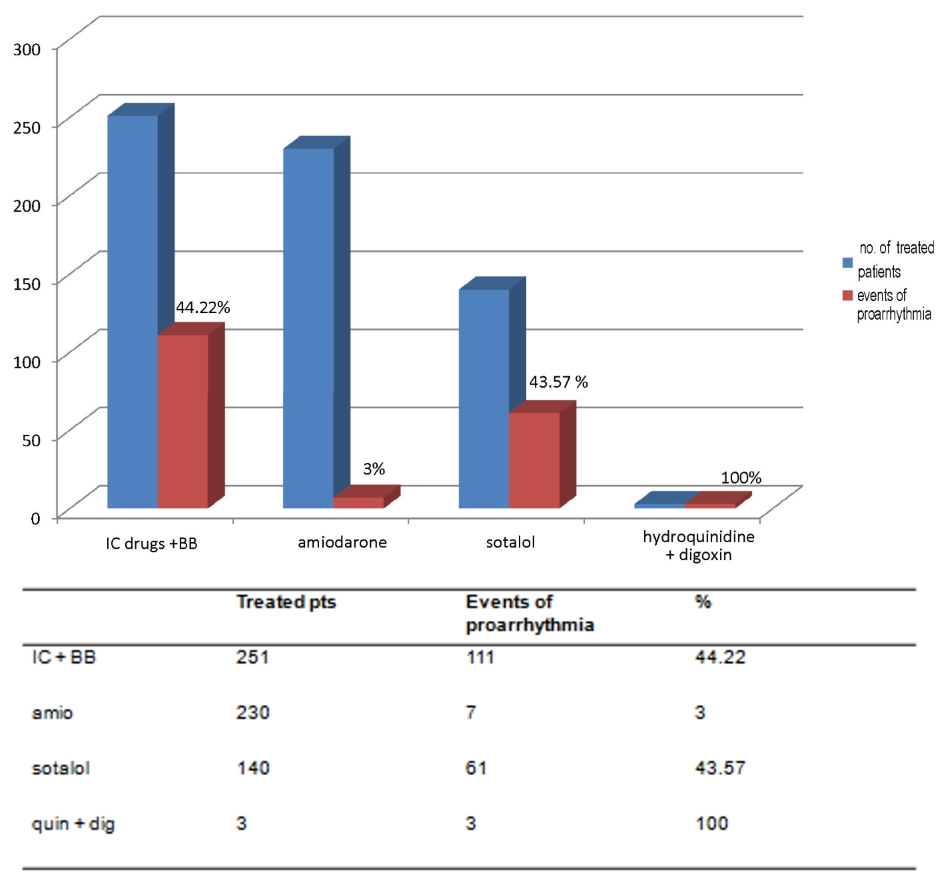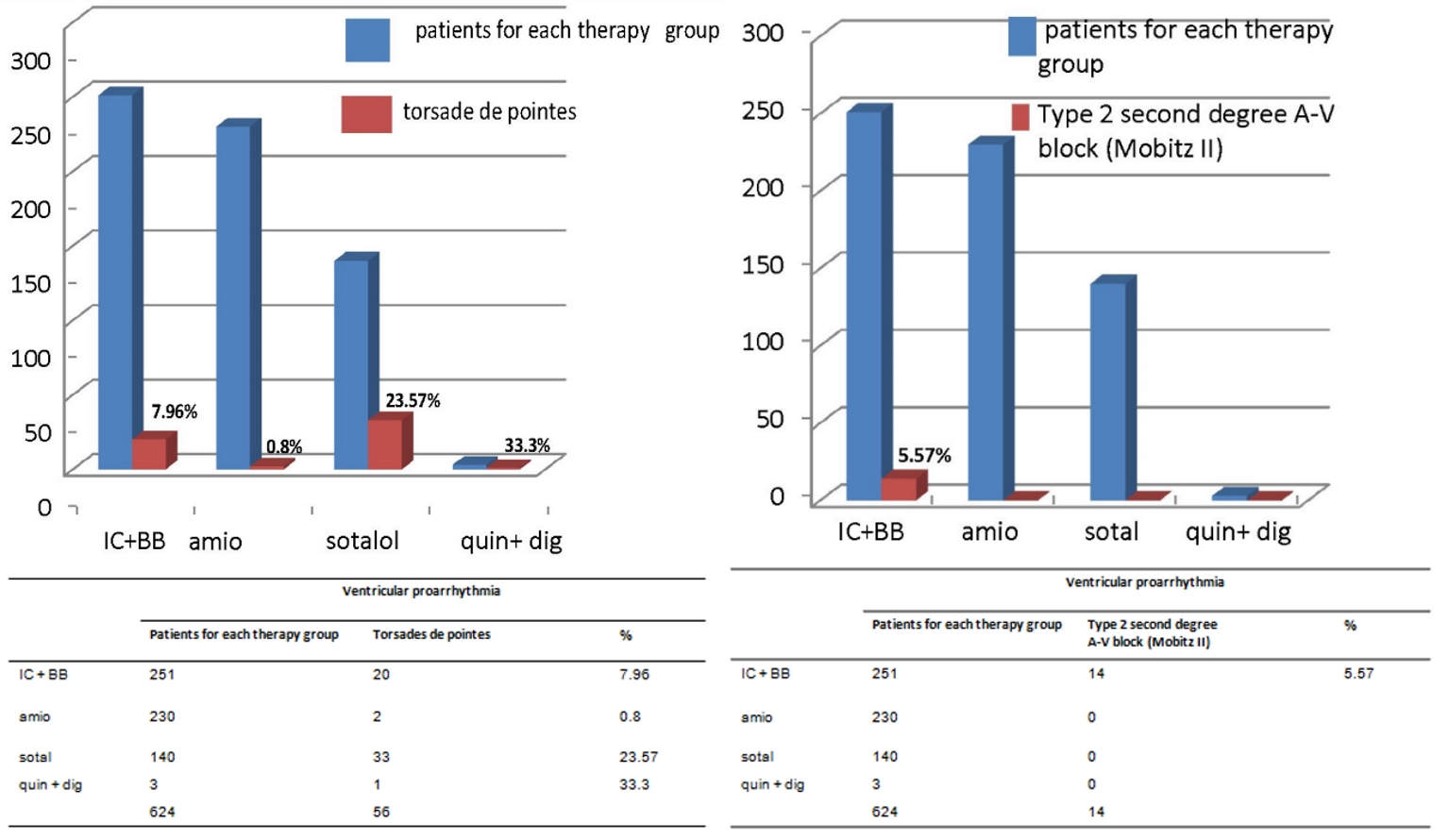| IA | Fast-channel blockers | Quinidine, ajmaline, procainamide, disopyramide | Ventricular arrhythmias, prevention of paroxysmal recurrent atrial fibrillation (triggered by vagaloveractivity), procainamide in Wolff-Parkinson-White syndrome, all these drugs increase QT interval |
| IB | | Lidocaine, mexiletine, tocainide | Treatment and prevention during and immediately after myocardial infarction, though this practice is now discouraged given the increased risk of asystole; ventricular tachycardia |
| IC | | Encainide, flecainide, propafenone, moricizine | Prevention of paroxysmal atrial fibrillation, treatment of recurrent tachyarrhythmias of abnormal conduction system; these drugs are contraindicated immediately after myocardial infarction |
| II | Beta-blockers | Carvedilol, propranolol, esmolol, timolol, metoprolol, atenolol, bisoprolol, nebivolol | Reduction in myocardial infarction mortality, prevention of tachyarrythmia's recurrences, propranolol has sodium channel-blocking effects |
| III | | Amiodarone, sotalol, ibutilide, dofetilide, dronedarone | Sotalol: ventricular tachycardias and atrial fibrillation; Ibutilide: atrial flutter and atrial fibrillation, amiodarone: prevention of paroxysmal atrial fibrillation, and hemodynamically stable ventricular tachycardia |
| IV | Calcium channel blockers | Verapamil, diltiazem | Prevention of recurrences of paroxysmal supraventricular tachycardia, slowing-down of ventricular rate in patients with atrial fibrillation |
| V | | Adenosine, digoxin, magnesium sulfate | Used in supraventricular arrhythmias, especially in heart failure with atrial fibrillation, contraindicated in ventricular arrhythmias; or in the case of magnesium sulfate, used in torsades de pointes |



